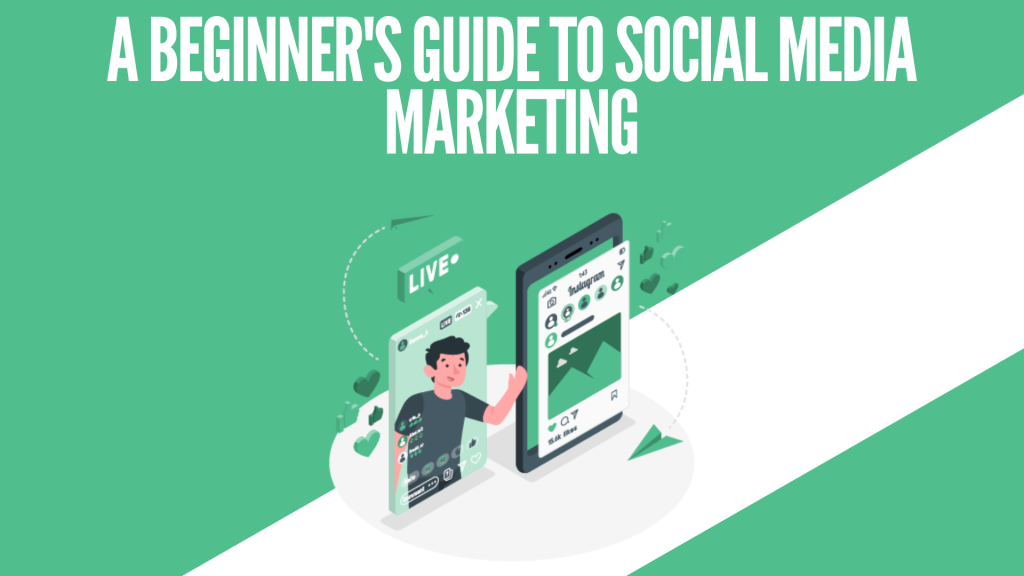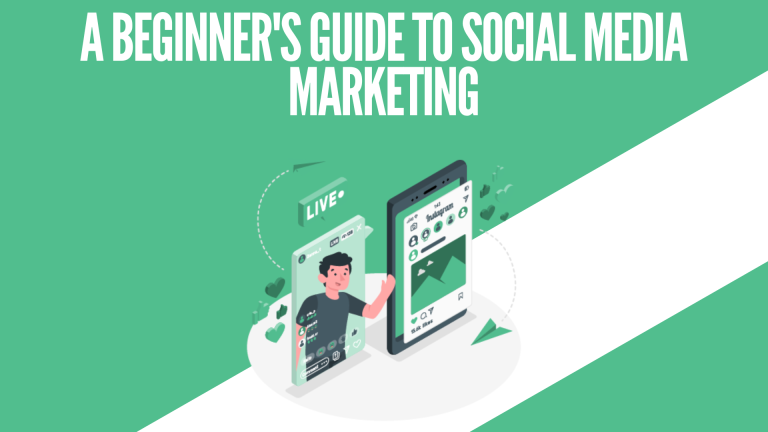
A Beginner's Guide to Social Media Marketing
In today's fast-paced digital landscape, where technology is evolving at an unprecedented rate, leveraging the power of social media has become an essential aspect of any successful business strategy. Social media marketing, a dynamic and transformative tool, allows businesses to forge meaningful connections, share valuable content, and establish an influential online presence. Whether you're a small business owner, a freelancer, or a marketing enthusiast, this comprehensive guide will unravel the nuances of social media marketing and provide you with actionable insights to embark on your journey with confidence.
Introduction to Social Media Marketing
In the vast realm of online communication, social media marketing has emerged as a compelling strategy to engage with audiences, cultivate brand loyalty, and drive business growth. In essence, it's the art of harnessing various social media platforms to connect, communicate, and collaborate with individuals who are seeking information, entertainment, and solutions. This guide serves as your compass to navigate through the labyrinth of social media, helping you craft a robust marketing strategy from the ground up.
Understanding Different Social Media Platforms
As a beginner, understanding the diverse ecosystem of social media platforms is fundamental. Each platform possesses its distinct characteristics, demographics, and communication styles, making it imperative to tailor your approach accordingly.
1. Facebook:
With over 2.8 billion monthly active users, Facebook remains a powerhouse for social interaction and business endeavors alike. It's a versatile platform that accommodates various content formats, including text, images, videos, and live streams. Businesses can leverage Facebook to showcase their products, share industry insights, and foster meaningful relationships with customers.
2. Instagram:
Catering to visual aesthetics and creativity, Instagram is the go-to platform for businesses that thrive on stunning visuals. It's immensely popular among younger demographics, offering features like Instagram Stories and Reels to engage audiences through ephemeral and short-form content. Brands can use Instagram to tell their stories, evoke emotions, and visually communicate their brand essence.
3. Twitter:
Twitter's signature 280-character limit encourages concise and impactful communication. It's an excellent platform for real-time updates, industry trends, and quick engagement with both customers and peers. By harnessing the power of trending hashtags and participating in relevant conversations, businesses can amplify their reach and visibility.
4. LinkedIn:
Built for professionals and networking, LinkedIn serves as a hub for B2B interactions, thought leadership, and professional development. Businesses can establish their authority by sharing insightful articles, participating in industry groups, and showcasing their expertise through long-form content.
Setting Clear Goals and Objectives
Before diving into the world of social media marketing, it's vital to establish clear goals and objectives. Defining your purpose helps you navigate the dynamic landscape effectively. Common goals include:
- Brand Awareness: Enhance your brand's visibility and recognition across social media platforms.
- Lead Generation: Attract potential customers by offering valuable content and incentives.
- Website Traffic: Drive traffic to your website or landing pages, ultimately boosting conversions.
- Engagement: Foster a vibrant community by encouraging interactions and discussions.
- Sales: Generate revenue by promoting products or services directly through social media.
Identifying Your Target Audience
Understanding your target audience is the cornerstone of successful social media marketing. By delving into demographics, interests, behaviors, and pain points, you can tailor your content and messaging to resonate with your intended audience. This strategic approach enhances the likelihood of engagement, conversion, and brand loyalty.
Content Creation and Strategy
Creating compelling content is at the heart of an effective social media marketing strategy. Here's how to develop a winning content strategy:
1. Visual Content:
Visual content, including images and videos, captures attention and evokes emotions. Create high-quality visuals that align with your brand's aesthetics and resonate with your audience's preferences.
2. Informative Content:
Educate and inform your audience with valuable content. Share industry insights, how-to guides, tutorials, and thought-provoking articles. Position your brand as a source of knowledge and expertise.
3. User-Generated Content:
Encourage your customers to create content related to your products or services. User-generated content adds authenticity and fosters a sense of community.
4. Consistency:
Maintaining a consistent posting schedule is vital for keeping your audience engaged and informed. Use social media management tools to streamline scheduling and track performance.
5. Hashtags:
Strategically incorporate relevant hashtags to expand your content's reach and visibility. Research trending and industry-specific hashtags to align with your target audience's interests.
6. Engaging Captions:
Craft captions that complement your visuals, engage your audience, and encourage interaction. Pose questions, share anecdotes, and invite your audience to share their thoughts.
Engaging with Your Audience
Social media is a two-way communication channel. Engage with your audience by responding to comments, messages, and mentions promptly. Acknowledge positive feedback, address concerns, and foster genuine interactions.
Measuring and Analyzing Results
Measuring the effectiveness of your social media efforts is crucial for refining your strategy. Utilize platform analytics to track key metrics:
- Engagement: Monitor likes, comments, shares, and retweets to gauge content resonance.
- Reach: Evaluate the number of unique users exposed to your content, indicating your potential audience size.
- Click-Through Rate (CTR): Measure the percentage of users who clicked on your links, reflecting the effectiveness of your call to action.
- Conversion Rate: Analyze the ratio of users who completed a desired action, such as signing up for a newsletter or making a purchase.
Paid Advertising on Social Media
While organic efforts are impactful, consider augmenting your strategy with paid advertising. Platforms like Facebook, Instagram, and LinkedIn offer advanced targeting options that enable you to reach specific demographics and maximize your return on investment.
Staying Up-to-Date with Trends
The landscape of social media marketing is constantly evolving, influenced by emerging technologies, shifting user behaviors, and cultural trends. Staying informed about industry developments, participating in relevant webinars, and networking with fellow marketers allows you to adapt your strategy effectively.
Frequently Asked Questions (FAQs)
Q1: How many social media platforms should I start with?
A1: It's best to begin with one or two platforms that align with your target audience and business objectives. Quality engagement trumps quantity.
Q2: How often should I post on social media?
A2: Consistency is key. Develop a posting schedule that you can realistically adhere to. Quality content holds more significance than frequent posting.
Q3: Is paid advertising necessary for social media success?
A3: While paid advertising can expedite your growth, organic efforts can yield substantial results. Evaluate your goals and budget to determine the most suitable approach.
Q4: How do I manage negative feedback on social media?
A4: Address negative feedback empathetically and professionally. Offer solutions privately if possible and showcase your commitment to customer satisfaction.
Q5: How can I measure the return on investment (ROI) of my social media efforts?
A5: Monitor metrics such as website traffic, lead generation, and sales conversions. Compare these metrics against your set goals to assess your ROI.
Conclusion: Your Journey into Social Media Marketing
As you embark on your journey into the realm of social media marketing, remember that every post, comment, and interaction contributes to shaping your brand's digital identity. By understanding your audience, curating engaging content, fostering authentic connections, and consistently analyzing results, you're poised to navigate the intricate landscape of social media marketing successfully. Embrace creativity, adaptability, and a passion for learning, as they are the pillars that will elevate your brand and propel it toward digital success.
More Social Media Marketing Blogs




